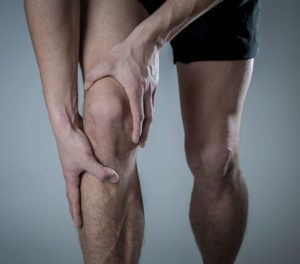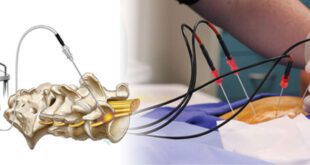An Interview with Dr. Kevin Elder, Sports Medicine Specialist
 Repetitive movements and overuse of muscles through the same range of motion can strain the muscles, nerves, tendons, and ligaments. Overuse injuries are common in children involved in athletic or fine arts activities and also in athletic adults, exercise enthusiasts, and anyone that uses the same muscle groups over and over for their job or life in general. Injuries can be caused by repetitive overuse, improper technique and posture, or inadequate equipment.
Repetitive movements and overuse of muscles through the same range of motion can strain the muscles, nerves, tendons, and ligaments. Overuse injuries are common in children involved in athletic or fine arts activities and also in athletic adults, exercise enthusiasts, and anyone that uses the same muscle groups over and over for their job or life in general. Injuries can be caused by repetitive overuse, improper technique and posture, or inadequate equipment.
Dr. Kevin Elder is a sports medicine specialist with a long history of treating professional athletes, children, and adults. We caught up with Dr. Elder to find out more about his preferred treatment protocols and the advice he offers his patients.
Q: With your expertise in treating professional athletes, weekend warriors and exercise enthusiasts, from children to adults, what are some of the most common overuse injuries you treat and along with repetition, what are the common causes?
A: With children and adults, the processes are somewhat different. Adults commonly have overuse injuries in the Achilles tendon, patellar tendon, runner’s knee, rotator cuff, and wrists. With children, we often see growth plate issues such as knee (Osgood-Schlatter), heel (Sever’s), pelvic/hip issues, and little league elbow and shoulder injuries.
The causes are, of course, repetitive movement, and also not enough time to recover or rest, imbalance of muscle use, and genetics, such as susceptibility to arthritis or inflammation. Concerning my pediatric patients, we typically see injuries when the child or teen plays one particular sport without any down time/off season, and there is use of the same muscle groups causing excessive pressure on growth plates or tissues.
Q: Many people might want to wait it out or try and self-treat at home. What are some of those conservative “at-home” treatment options, and also, what are the symptoms of injuries that require medical intervention?
A: First-line treatment for most is to self-treat at home. We do recommend the RICE method, which is rest, ice, compression, and elevation. Some people may take NSAIDs, such as ibuprofen as an anti-inflammatory, but we do not recommend NSAIDs long-term as they can cause other adverse issues throughout the body, and they are not treating the root cause, but rather masking the pain. Many patients will consult with “Doctor Google” and look up various exercises or stretches. These can be beneficial, but I want patients to make sure they are not injuring themselves further.
As far as medical intervention, a person needs an evaluation if they are not getting better within a few weeks, or if they have limited activity levels. If you can’t go about your daily tasks or resume normal exercise, range of motion, or movement without pain or impingement, you need to see a specialist—One that will get to the root cause of your pain and not just mask those symptoms with medications or injections such as corticosteroids. Long-term use of corticosteroids is known in many cases to exacerbate conditions and make them worse over time. We use a comprehensive approach to help heal our patients and offer regenerative methods to rebuild strength and mobility.
Q: Because you have advanced treatment protocols for your patients, tell us more about MSK ultrasound, orthobiologic treatments, and other methods that you use, and why those are significant for lasting outcomes.
A: I use advanced treatment and diagnostic protocols. It’s critical to get a precise, definitive diagnosis. MSK ultrasound is a remarkable diagnostic tool that I’ve been utilizing for well over the past decade. It’s an in-office evaluation that’s in real-time, which allows us to see the intricate detail of muscle, ligaments, tendon, fluid, and joint dysfunction. It’s done under movement, so unlike an MRI or CT Scan, MSK ultrasound provides dynamic imaging. It’s also very cost-effective. I’ve done several thousand of these, and if a physician is experienced, that’s what sets an accurate diagnosis apart from others. We do x-rays in our office as well, which is also useful for kinetic injuries.
Regarding orthobiologic treatments, PRP (platelet-rich plasma) is well studied and has a high level of success. It’s essentially a blood sample taken from the patient and spun down in a centrifuge to produce a concentrate of platelets, called platelet rich plasma, that is then reinjected into the injured area. I’ve done over 3,000 PRP procedures in my office. It’s completely natural, and the body fully accepts it since it’s not a foreign substance. In many cases, it may allow a patient to delay or avoid surgery altogether. I think of it as a “fertilizer” that’s applied to a field with weeds or bald spots (which are injured tendons or arthritis in a joint). PRP provides a means for growth and healing.
Going a step further, we also provide a bone marrow-derived cellular injection called bone marrow aspirate concentrate (BMAC), which is basically a bone marrow stem cell injection. Stem cells derived from bone marrow are concentrated and may help to regenerate and initiate healing on an optimal level. It’s like seeds plus fertilizer provided to the dirt of the field. It might be thought of as a more potent option than PRP, because of the presence of some live mesenchymal stem cells from the bone marrow. BMAC is a preparation containing some live stem cells. If a patient has significant degenerative arthritis or more serious cartilage or tendon injuries, BMAC might be a better treatment option for them. We’ve seen it provide life-changing results. Earlier today, I had a follow up with a patient that is wheelchair-bound. The patient is paraplegic and has only upper body utilization to move and had developed a rotator cuff injury. With BMAC, she is doing tremendous, healing well and has marked improvement in range of motion and pain reduction.
We do both PRP and BMAC in-office under local anesthetic with a mild sedative if needed.
Q: Because you incorporate a comprehensive, customized treatment plan for your patients, tell us a little more about your approach and thoughts regarding nutrition, resting, and optimal recovery.
A: First, I can’t stress enough how important it is to appropriately identify the diagnosis and then customize a tailored approach. I do this by considering all of the evidence, history, and goals for each patient. I provide my patients with options and detailed information on the various treatments. I also give patients all of the information and literature to take home and to help them make a decision that they are comfortable with. My thoughts regarding nutrition and a healthy lifestyle are that they are part of a comprehensive approach. Food is fuel for the body but must be personalized and suitable for each patient according to their needs, medical conditions, and preferences. Good sleep hygiene allows release of growth hormone that helps the tissues repair themselves, and I also believe stress management is also essential. We might recommend quality physical therapy, some chiropractic treatments, yoga, sports massage or other wellness therapeutics to our patients depending on their circumstances and needs. I give them a list of practitioners that I trust and work with regularly. We may also discuss nutritional supplements that we feel this can stimulate specific healing properties depending on the injury.
Because of Dr. Elder’s expertise, he is often asked to speak and teach regionally and locally on his ortho biologic treatment protocols.
Kevin Elder, M.D.
Kevin Elder is a trusted and respected sports medicine specialist caring for the Tampa, Florida community. Dr. Elder received his B.S. Microbiology from The Ohio State University then attended the University of Toledo, where he received his medical degree, and completed his residency in family medicine and a fellowship in sports medicine at Bayfront Medical Center. He is a member physician of BayCare Medical Group. He is board certified in family medicine and sports medicine by the American Board of Family Medicine. He speaks both English and Spanish. Patients trust Dr. Elder’s expertise because he consistently provides high quality care that leads to positive and lasting health outcomes. He has trained extensively in Musculoskeletal Ultrasound and Regenerative Medicine and has performed numerous Platelet Rich Plasma (PRP) injections for a variety of musculoskeletal conditions and is now performs stem cell (BMAC) injections as well. He is one of the most experienced doctors in the Tampa Bay area performing these type of procedures under MSK ultrasound guidance and has published articles in national journals on these topics. Dr. Elder is a sought-after consultant, having worked with professional sports teams including the Tampa Bay Buccaneers for 5 years as a team physician, and currently with the US Ski Team and US Soccer. Dr. Elder is uncompromising in his dedication to the well-being of his patients. He is committed to giving the best care and establishing long-lasting relationships with them.
BayCare Medical Group
Adult and Pediatric Sports Medicine
1919 W Swann Ave Fl 3, Tampa, FL 33606
(813) 254-8055 | BayCareMedicalGroup.org
El habla Español
 Central Florida Health and Wellness Magazine Health and Wellness Articles of the Villages
Central Florida Health and Wellness Magazine Health and Wellness Articles of the Villages


